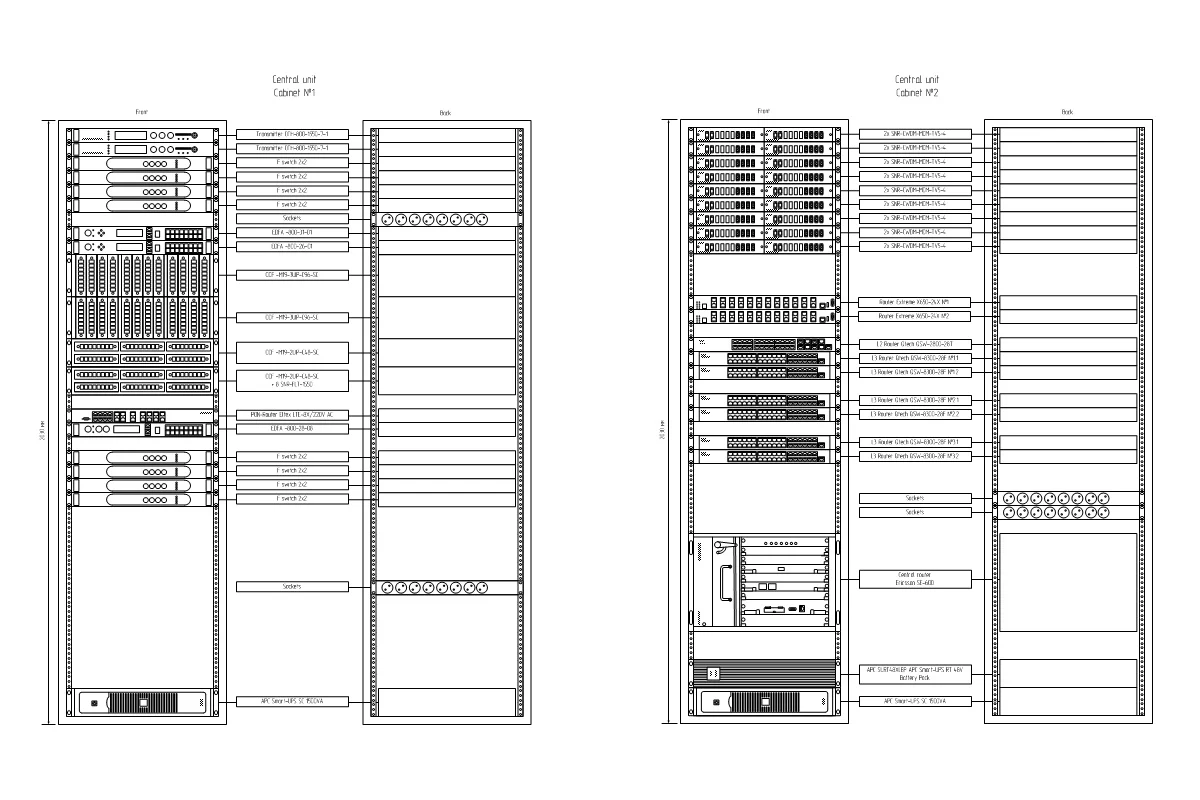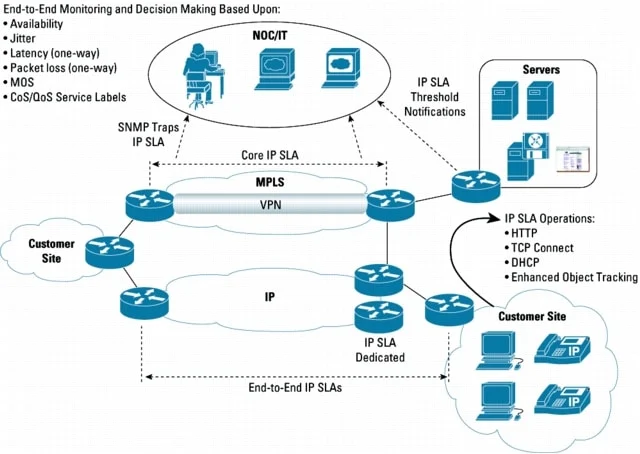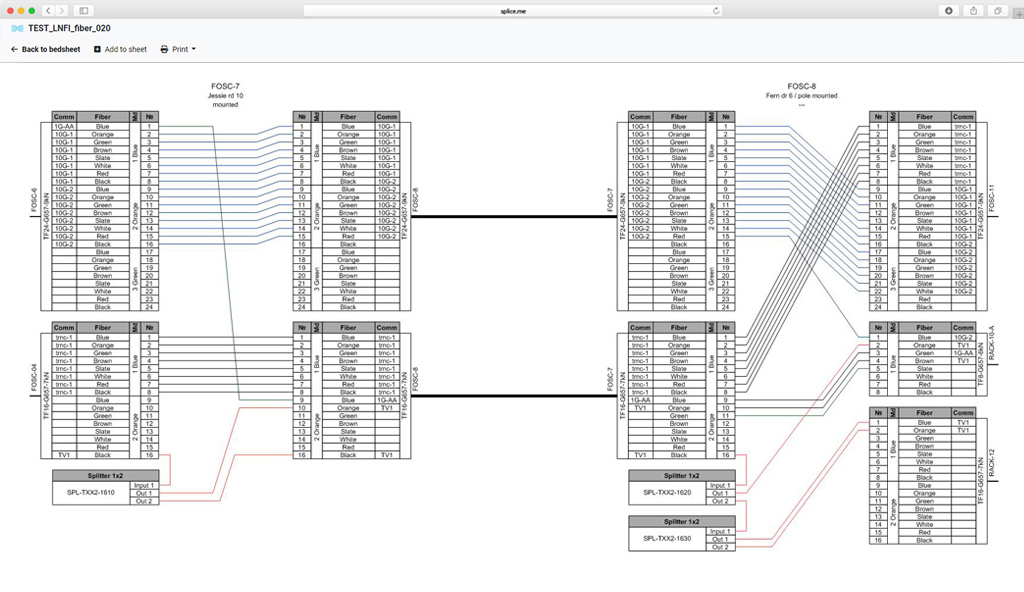
Fiber optic systems are the foundation of current communication networks, allowing fast transfer of information over huge distances. Proper handling and documentation of these complex networks are vital, and fiber splice diagram creation tools have become indispensable for network experts. These platforms simplify the planning and upkeep engineering processes, guaranteeing smooth operations in the field and in the office, and dependable connectivity.
Table of Contents
- Introduction to fiber splice diagram creation platforms
- Popular fiber splice diagram creation platforms
- Key features of fiber splice diagram creation platforms
- Choosing the right fiber splice diagram creation platform
- Best practices for using fiber splice diagram creation platforms
- Conclusion
- Related posts
- Frequently asked questions (faq)
- Sources
Key Takeaways
- Fiber splice diagram creation platforms are specialized software solutions designed to streamline drafting, management and documentation of fiber optic networks, fiber splice diagrams in particular.
- These platforms provide sophisticated computer-aided design capabilities, database integration, and in many cases geospatial mapping features for precise network management.
- Popular platforms include AutoCAD Map Series, MS Visio, ESRI/ArcGIS, Splice.me and many others.
- When picking a platform, assess your company’s particular requirements and think about integration with current systems, e.g. network monitoring system.
- Best practices involve proper data management, fostering collaboration, easy onboarding and ensuring ongoing support.
- Systems like Splice.me provide specialized fiber design and management abilities, backing out of the ideology of a GIS-based network design software, but complementing traditional GIS-based platforms at the same time.
- By utilizing these platforms and tools, companies can guarantee efficient and precise network documentation, smooth cooperation, resulting in enhanced network dependability and client fulfillment.
Introduction to Fiber Splice Diagram Creation Platforms
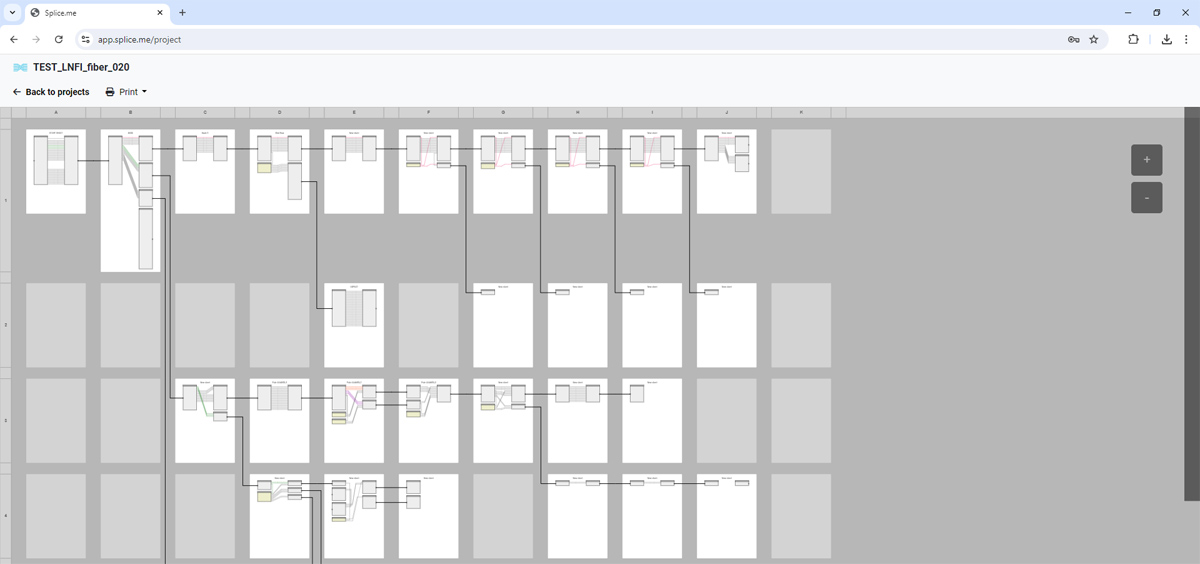
What are Fiber Splice Diagram Creation Platforms?
Fiber splice diagram creation platforms are specialized software solutions intended to simplify the management and documentation of fiber optic networks. These platforms offer a complete set of tools and features that allow network experts to design and maintain complex fiber optic infrastructures with accuracy and efficiency.
At their core, fiber splice diagram creation platforms provide advanced computer-aided design capabilities, enabling users to develop thorough diagrams and schematics of fiber optic networks. These visuals not just act as visual depictions of the fiber network core but additionally facilitate the preparation and execution of fiber splicing tasks, which are vital for guaranteeing uninterrupted connectivity.
Benefits of Using Fiber Splice Diagram Creation Platforms
Utilizing fiber splice diagram creation platforms delivers numerous perks to network operators and service providers. A key benefit is enhanced operational efficiency. By centralizing network data, offering a unified platform for design, drastically speeding up the design process, these solutions minimize the chance of mistakes and miscommunications, ultimately decreasing downtime and associated costs.
Furthermore, modern fiber splice diagram creation platforms boost teamwork and communication among groups, helping fiber splicers in the field better understand network engineers dwelling in the office. With real-time data sharing and version control capabilities, multiple stakeholders can access, check and contribute to network diagrams, promoting a more streamlined and coordinated approach to network management and deployment.
Another major advantage is precision and uniformity in fiber network documentation. These tools frequently integrate with current databases and sometimes geographic data systems, guaranteeing that network diagrams mirror the latest information. This degree of accuracy is vital for efficient troubleshooting, upkeep, and future network expansions.
Likewise, numerous fiber splice diagram creation platforms provide sophisticated reporting and analytics tools, allowing network experts to obtain precious insights into network execution, capacity usage, and potential bottlenecks. This data-driven tactic empowers informed choice-making and proactive network optimization.
Utilizing tools like Splice.me, fiber network operators can simplify their processes, boost teamwork, and guarantee precise documentation, ultimately resulting in enhanced network dependability and customer contentment.
Popular Fiber Splice Diagram Creation Platforms

The market for fiber splice diagram creation platforms is diverse, with several industry-leading solutions catering to the unique needs of network operators and service providers. Here are some of the most popular platforms.
AutoCAD / Map Series
Crafted through Autodesk, the AutoCAD Map Series represents an all-inclusive collection of CAD instruments tailored explicitly for mapping and geographic data systems applications. This platform delivers sophisticated capabilities for generating intricate fiber optic network diagrams, encompassing support for diverse data formats and seamless integration with other Autodesk products. The downside is it demands decent skills and splice diagrams creation is time consuming.
Microsoft Visio
Visio, as any other similar general diagram creation software like e.g. draw.io, offers vast capabilities for designing fiber splice diagrams and some VBA automation. One can produce tons of various fiber splice sheets in it, it is still a hand-work and is time consuming.
ESRI/ArcGIS / FiberManager
ESRI’s ArcGIS is a prominent geographic data system platform extensively utilized across diverse sectors, encompassing telecommunications. Leveraging its sophisticated mapping and spatial examination proficiencies, ArcGIS furnishes a sturdy basis for generating fiber splice schemes and facilitating streamlined network preparation and upkeep. Specialized skills, knowledge and experience are mandatory to work with it.
Other software
A long list of other specialized software contains: SchemaFiber, OSP Insight, IQGEO, Patch Manager, FiberPlanIT, CrescentLink Geograph, Vetro FiberMap, GraphicalNetworks, FibKit, CoconFiber, CircuitVision, Continuum, Inova TeleCAD, NetStork, 3GIS (shout out to the behemoth), CableScout, UserSide (shout out to the cool guys), Render Networks, Biarri Networks, GeoStruct and so on (to infinity)
These tools give a variety of highlights and abilities customized to the particular requirements of organization administrators and specialist co-ops. When picking a fiber optic network management system, it’s critical to assess variables like simplicity of use, reconciliation with existing frameworks, adaptability, and continuous help.
Splice.me
Moreover, splice.me fiber splice diagram creation software is very different from all above mentioned. It’s main advantages are:
- Extreme simplicity so one does not need onboarding
- Speed – you can create fiber splice sheets in several clicks
- It is a web SaaS, so you can manage fiber network splice diagrams from anywhere
Key Features of Fiber Splice Diagram Creation Platforms
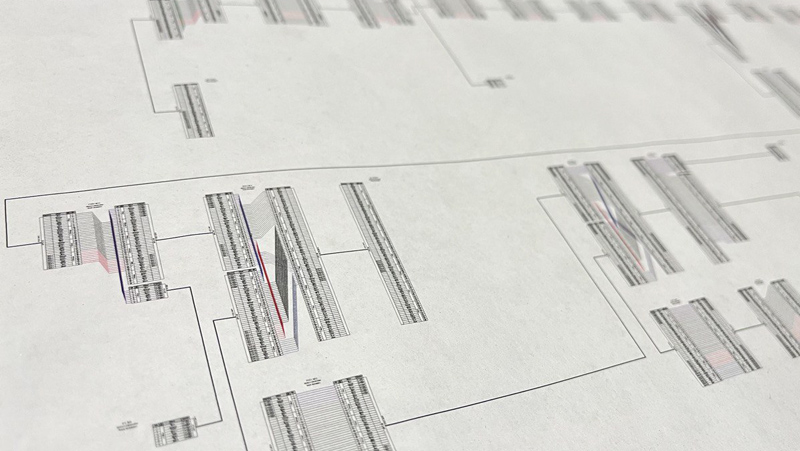
Although fiber splice diagram creation platforms could differ in their particular offerings, they commonly share various crucial aspects enabling efficient network engineering and documentation.
CAD and Database Management
At the heart of these systems lies sturdy computer-aided design abilities, enabling users to produce thorough and precise fiber optic network diagrams. These CAD implements frequently integrate with existing databases and geographic information systems, guaranteeing that network diagrams mirror the most current data from various information sources.
Geospatial Asset Creation
Lots of fiber management platforms provide geospatial asset creation tools, allowing users to generate precise representations of the physical environment where the fiber optic network is deployed. This includes features like aerial imagery integration and the capability to overlay network infrastructure on geographic maps.
Network Design and Engineering
Though usually fiber splice diagrams are a component part of network management systems, in addition to documentation capabilities, these platforms frequently include numerous other tools for network design and engineering. Engineers can utilize these features to plan and optimize network routes, calculate fiber lengths, create BOMs, simulate various scenarios to ensure efficient network deployment and maintenance.
Choosing the Right Fiber Splice Diagram Creation Platform

With the big variety of fiber splice diagram creation tools out there in the market, choosing the most fitting answer for your company can be a tough job. To make sure a well-informed choice, it’s key to think about the following parameters:
Evaluating Your Needs
Prior to investigating different platforms, dedicate some time to evaluate your organization’s particular demands. Contemplate aspects like the magnitude and intricacy of your fiber optic network, the quantity of individuals who’ll be utilizing the system, and any distinctive industry-specific necessities or regulatory conformity prerequisites.
Comparing Platform Capabilities
Once you have a clear grasp of your requirements, thoroughly assess the capabilities of different fiber splice diagram creation platforms. Pay close attention to features like CAD and database integration, network design and engineering capabilities, reporting and analytics functionalities, onboarding process difficulty, speed of operation, overall cost.
Considering Integration and Compatibility
In today’s linked business scene, it’s crucial to guarantee that the picked fiber splice diagram software flawlessly coordinates with your current frameworks and work processes. Assess the software’s similarity with your current environment, including geographic data systems and other pertinent applications.
Moreover, contemplate the systems’s capacity and ability to grow and adapt to upcoming expansion and changing needs. A versatile and expandable option could prevent you from expensive transfers or substitutions later on.
Carefully assessing your requirements, contrasting platform abilities, and thinking about integration and compatibility, you can make an informed choice and pick a fiber splice diagram creation platform that lines up with your company’s objectives and supports efficient fiber network management and documentation.
Best Practices for Using Fiber Splice Diagram Creation Platforms
While fiber splice diagram creation platforms provide strong tools for network engineering and documentation, their usefulness heavily depends on proper execution and following best practices. Here are some key things to consider to maximize the advantages of these platforms:
Data Management and Organization
Keeping information precise and up to date is vital for a fiber network to be stable. Set obvious rules for data input, checking, and version management to make sure steadiness and dependability across your team.
Additionally, contemplate putting into action a uniform naming system and organizational arrangement for your fiber optic network resources and paperwork. This approach will make simpler navigation, recovery, and teamwork among team members.
Collaboration and Teamwork
Fiber splice diagram creation platforms frequently incorporate teamwork features that permit various engineers to get into and contribute to network diagrams at the same time. Promote cross-functional cooperation by giving suitable access levels and nurturing open communication channels. Determine obvious duties and obligations inside your team to guarantee productive collaboration and dodge clashes or repeated attempts.
Ongoing Training and Support
Putting money into thorough training for your crew is crucial to maximize the potential of your fiber splice diagram creation platform. Look for vendor-provided training resources, like online courses, documentation, and webinars, to make sure your team is skilled in using the platform’s features properly.
By adhering to these optimal methods, you can guarantee that your fiber splice diagram generation platform is leveraged to its maximum capacity, facilitating streamlined network oversight, precise documentation, and seamless teamwork. Solution like Splice.me can further boost your workflow by offering specialized fiber management and design functionalities. Also it’s such a light-weight and intuitive solution, that any network engineer can jump in and start working immediately with no onboarding.
Conclusion
In today’s quickly changing digital world, effective fiber optic network control is vital for businesses of every size. While conventional GIS-based network planning software provides complete answers, specialized instrument like Splice.me can simplify particular parts of fiber optic network supervision, for example making and keeping precise fiber splice diagrams and sheets.
Splice.me is a user-friendly platform that makes the process of drafting, creating, and managing fiber splice diagrams (splice sheets) for fiber optic networks easier and faster. With its intuitive three-click interface, users can easily generate neat splice diagrams. This focused approach allows organizations to optimize and boost their fiber management workflows, ensuring accurate documentation and efficient collaboration among engineers.
By incorporating Splice.me into their current fiber optic network administration tactics, ISPs can gain from a simplified answer customized to their particular requirements. Whether functioning alongside conventional GIS-based platforms or as a standalone instrument, Splice.me enables organizations to remain ahead of the curve in fiber optic network documentation and management.
Related Posts
- Fiber management software solutions
- Fiber optic network design tools
- Fiber mapping – how to make a fiber network map
Frequently Asked Questions (FAQs)
What is a fiber splice diagram creation platform?
A fiber splice diagram creation platform is a specialized software solution intended to streamline the administration and documentation of fiber optic networks in general and fiber splice diagrams in particular. These solutions offer a thorough set of tools for fiber network experts to plan, design, map and sustain complex fiber optic infrastructures with accuracy and productivity.
Why are fiber splice diagram creation platforms important?
Fiber splice diagram creation platforms are essential for efficient network management and documentation. They assist network experts in designing, mapping, and maintaining fiber optic networks, ensuring smooth operations and reliable connectivity. These platforms additionally facilitate collaboration, data management, and ongoing support for network operations.
What are the key features of fiber splice diagram creation platforms?
Some of the key features of fiber splice diagram creation platforms include advanced computer-aided design capabilities, database management tools, geospatial network asset management, network design and engineering tools, and integration with network monitoring software.
How do I choose the right fiber splice diagram creation platform?
Picking the correct fiber splice diagram creation tool needs evaluating your particular requirements, contrasting the abilities of various platforms, and thinking about things like integration with current network software, scalability, ongoing assistance, ease of use.
What are some best practices for using fiber splice diagram creation platforms?
Proper techniques for utilizing fiber splice diagram creation tools involve suitable information supervision and organization, encouraging cooperation and teamwork among network engineers, and guaranteeing continuous assistance for field engineers. Furthermore, it’s crucial to adhere to industry norms and guidelines for fiber optic network planning and documentation.
Sources
Don't hesitate! Start using splice.me
Create, manage, control all your fiber splicing in one place, fast and easy

